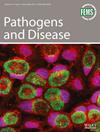Invasive candidiasis in Africa, what is the current picture?
IF 2.7
4区 医学
Q3 IMMUNOLOGY
引用次数: 2
Abstract
Invasive candidiasis is a serious, progressive, and potentially deadly infection that can affect the brain, heart, bones, eyes, and other parts of the body. It is associated with risk factors such as the use of indwelling medical devices and prolonged hospital stay, and broad-spectrum antibiotics use. It is especially seen in immunocompromised individuals such as patients with prolonged hospital stay, gastrointestinal surgery, haematological malignancies, and respiratory diseases. We have conducted a systematic search of literature using a select group of database and appropriate search words and found that in Africa, there are 18,293 documented/reported cases of invasive candidiasis in the last few decades (1976-2021) and 16,636(91%) were cases of candidaemia. South Africa had the highest number of reported cases - 15,002(82%), which may be due to underreporting of cases in other countries. HIV positive persons with invasive candidiasis in Africa accounted for 1,052(5.8%). C. albicans was the most frequently isolated species 6,328(32.6%), followed by Candida parapsilosis 5,910(30.4%), and Candida auris 1,505(7.8%). Due to the affordability and availability of blood culture, it was used for diagnosis in most of the studies examined, while a few studies combined other techniques and just 3 studies from 2 countries used serological tests. Echinocandins are recommended as first-line therapy but are only available in 12 countries and are highly priced. The use of fluconazole because of its availability and relatively inexpensive nature has led to increased resistance of Candida species to the drug.侵袭性念珠菌病在非洲的现状如何?
侵袭性念珠菌病是一种严重、进行性和潜在致命的感染,可影响大脑、心脏、骨骼、眼睛和身体其他部位。它与诸如使用留置医疗器械和延长住院时间以及使用广谱抗生素等风险因素有关。尤其见于免疫功能低下的个体,如住院时间延长、胃肠手术、血液恶性肿瘤和呼吸系统疾病患者。我们使用精选的数据库组和适当的检索词对文献进行了系统检索,发现在非洲,过去几十年(1976-2021)有18293例侵袭性念珠菌病记录/报告病例,16636例(91%)为念珠菌血症病例。南非报告的病例数最多,为15,002例(82%),这可能是由于其他国家少报病例所致。非洲感染侵袭性念珠菌病的HIV阳性患者占1052例(5.8%)。分离最多的菌种为白色念珠菌6328株(32.6%),其次为假丝酵母菌5910株(30.4%),耳念珠菌1505株(7.8%)。由于血培养的可负担性和可获得性,在大多数被检查的研究中,它被用于诊断,而少数研究结合了其他技术,来自两个国家的只有3项研究使用了血清学检测。棘白菌素被推荐为一线治疗药物,但仅在12个国家可获得,且价格高昂。氟康唑的使用,由于其可获得性和相对便宜的性质,导致念珠菌物种对药物的耐药性增加。
本文章由计算机程序翻译,如有差异,请以英文原文为准。
求助全文
约1分钟内获得全文
求助全文
来源期刊

Pathogens and disease
IMMUNOLOGY-INFECTIOUS DISEASES
CiteScore
7.40
自引率
3.00%
发文量
44
期刊介绍:
Pathogens and Disease publishes outstanding primary research on hypothesis- and discovery-driven studies on pathogens, host-pathogen interactions, host response to infection and their molecular and cellular correlates. It covers all pathogens – eukaryotes, prokaryotes, and viruses – and includes zoonotic pathogens and experimental translational applications.
 求助内容:
求助内容: 应助结果提醒方式:
应助结果提醒方式:


